JD Combs Sr
Member
I had an idea for using a new kitchen sponge as a filler in clear Alumilite. Here is how it turned out.
I had a pack of 1/2" an 3/4" thick Ocelo sponges. I took them out of the pack and let them dry a few days the cast a couple.
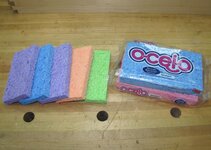
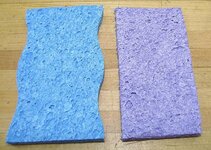
I cast the 1/2" blue and purple first. The small sponges make about 5 1/2"x1/2" blanks.
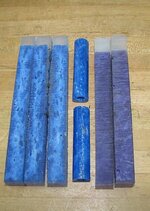
The results.
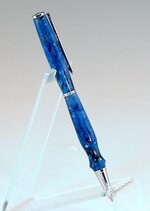
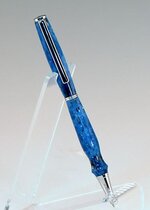
Observations:
-Although I cast under 60" psi pressure there were still a few air holes(cavities) within the sponge. Filled at turing with CA.
-The sponge tended to turn white at tool shear points that were perpendicular to the normal upper and lower surfaces of the sponge.
-Several of the internal cavities were so large as to expose the black painted tube to view.
C&C appreciated.
Note: After casting/making this pen I read an IAP post about using natural sponge and getting the same effect as cactus skeleton, may try that also.
I had a pack of 1/2" an 3/4" thick Ocelo sponges. I took them out of the pack and let them dry a few days the cast a couple.


I cast the 1/2" blue and purple first. The small sponges make about 5 1/2"x1/2" blanks.

The results.


Observations:
-Although I cast under 60" psi pressure there were still a few air holes(cavities) within the sponge. Filled at turing with CA.
-The sponge tended to turn white at tool shear points that were perpendicular to the normal upper and lower surfaces of the sponge.
-Several of the internal cavities were so large as to expose the black painted tube to view.
C&C appreciated.
Note: After casting/making this pen I read an IAP post about using natural sponge and getting the same effect as cactus skeleton, may try that also.
Last edited:
